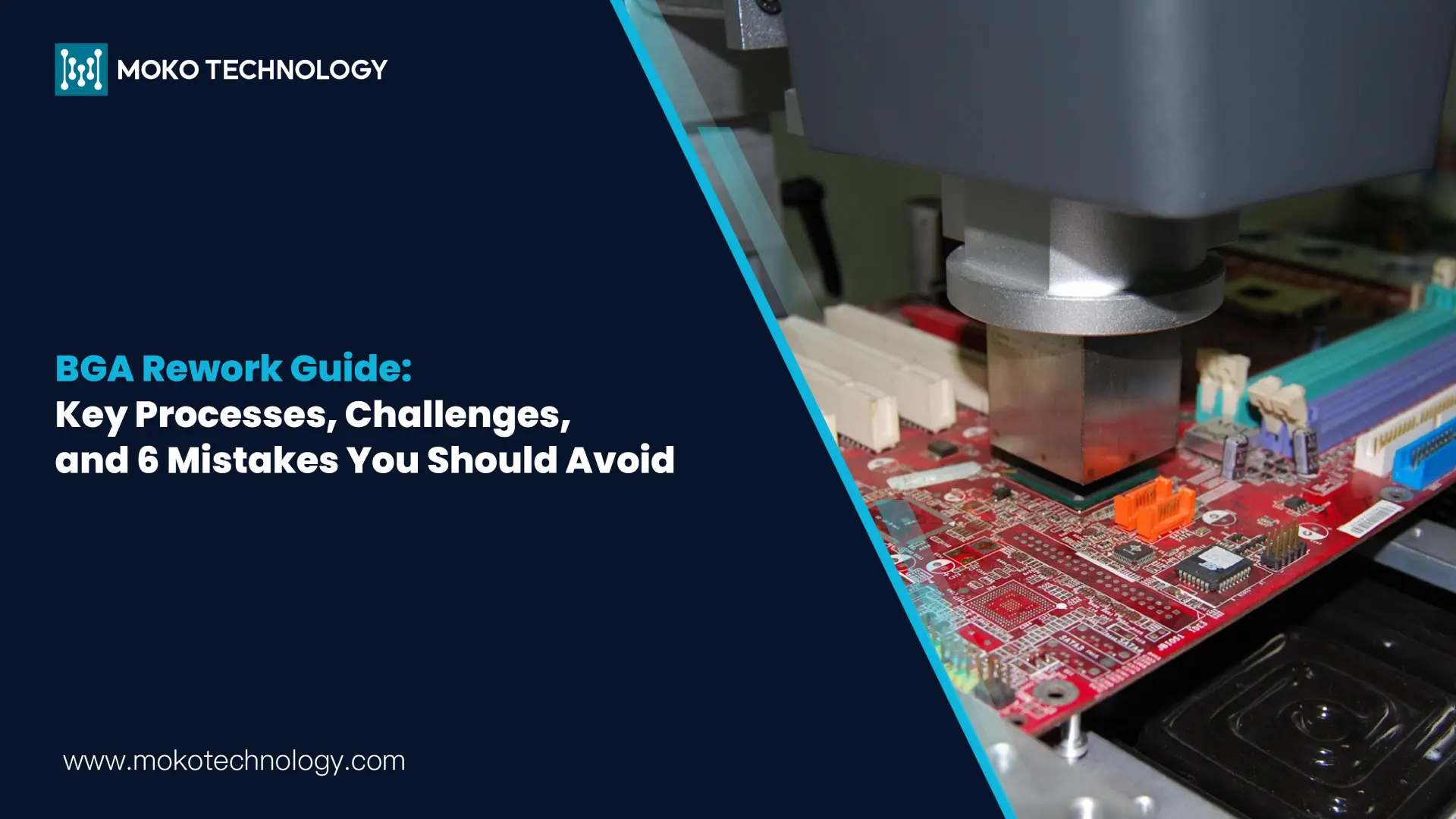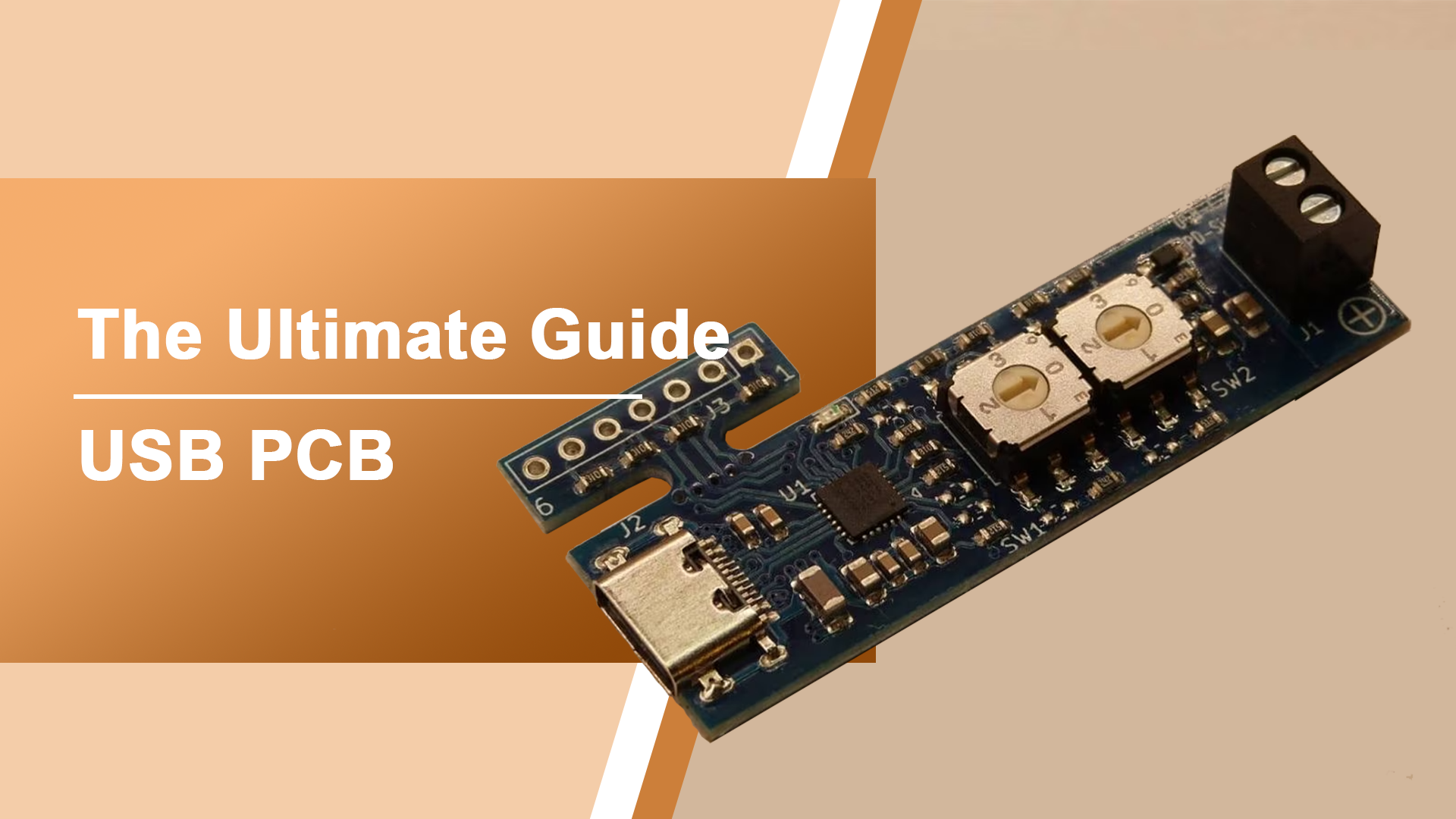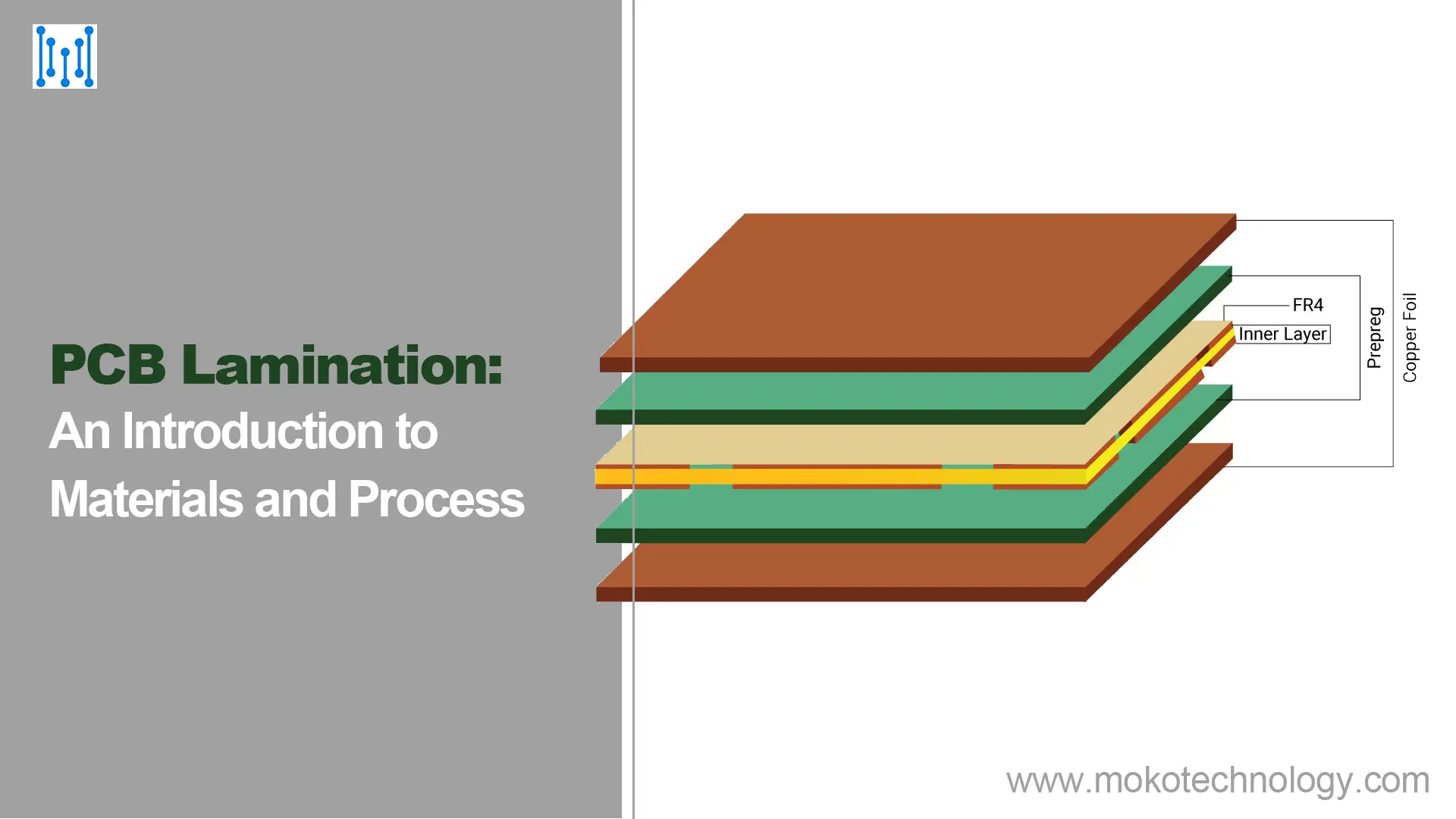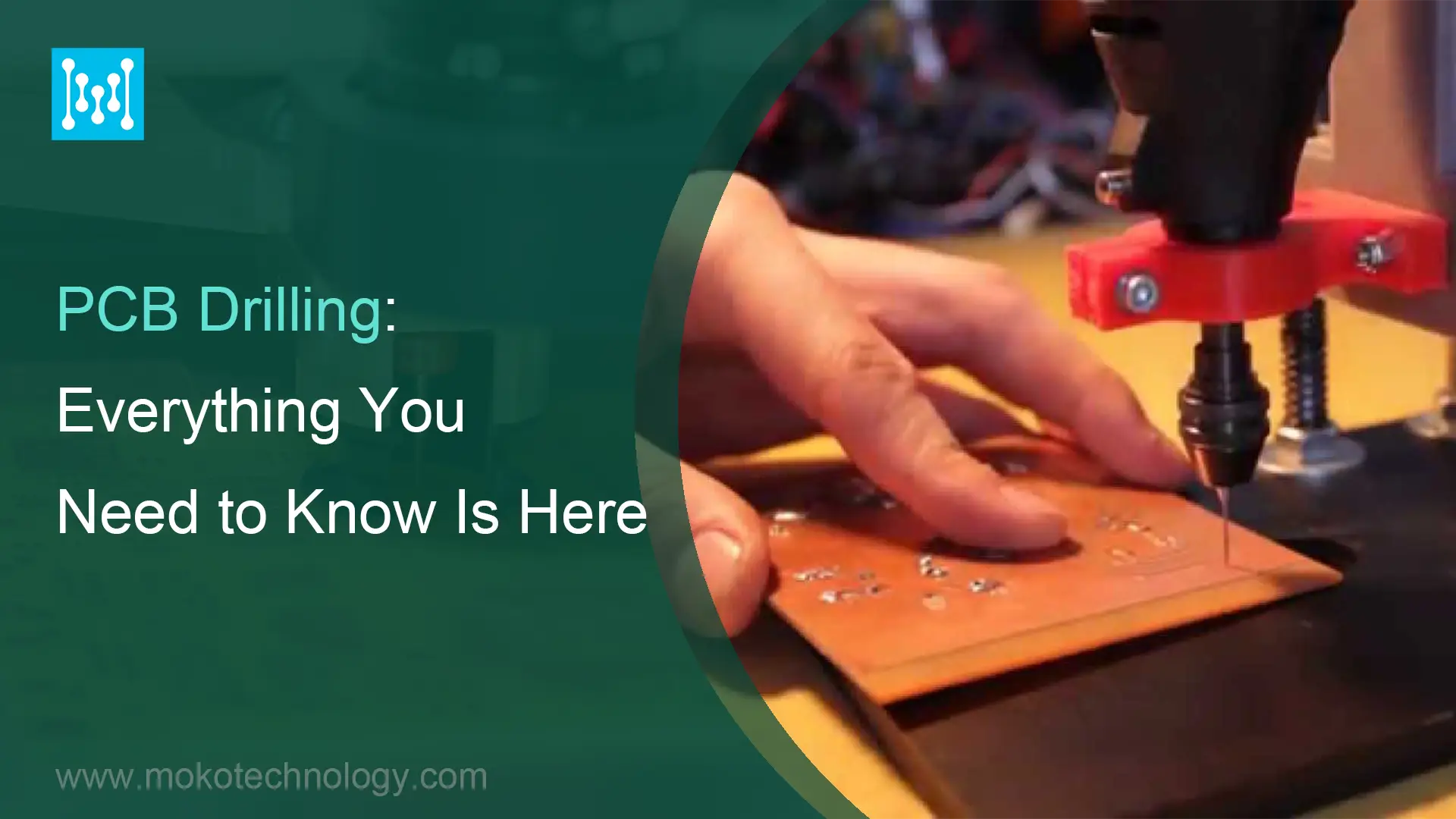Advancements in Ball Grid Array technology have improved the packaging of electronic components delivering enhanced performance and greater reliability for today’s electronics. However, these advantages come with a unique challenge: BGA rework. The removal and insertion of BGA components on PCBs requires certain devices and knowledge. In this post you will find the fundamentals of the BGA rework processes as well as the 6 pitfalls to avoid and the key difficulties you could encounter during that stage.
What is the BGA Rework Process? Step-by-Step Explanation
The steps involved in ball grid array rework are:
- Component Removal
A BGA rework needs preheating before the removal of any component. We apply localized heat from the top of the component and the solder melts. Then we remove the component from the BGA via a vacuum.
- Site Dressing and Solder Removal
This step requires fixtures for holding the component down while the exposed solder is faced up. Then the component is kept flat by the vacuum from beneath, and vacuum on the top allows for removing the residual solder.
- Component Attachment and Re-soldering
Once we have removed the components and cleaned the sites, then the next and final step is re-soldering. In this step, we reattach repaired or replacement components to the BGA by using soldering. A complementary technique is solder dipping, where we dip the BGA into a pre-determined soldering fixture.
6 Common Mistakes of BGA Rework
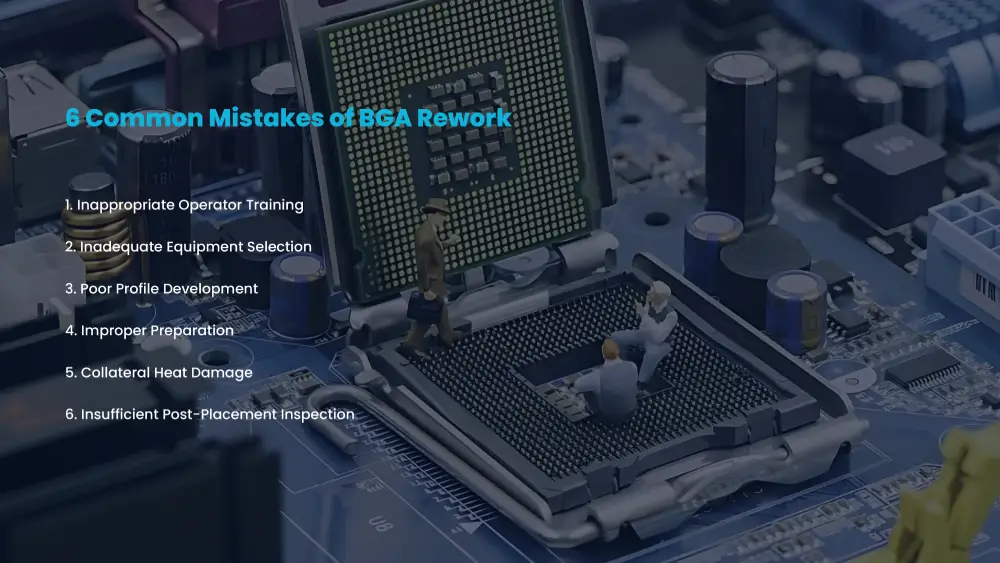
The operator must have deep knowledge of the ball grid array rework and skilled hands for handling delicate components. Here are six common BGA Rework mistakes which you must avoid:
- Inappropriate Operator Training
We can’t emphasize this enough. BGA rework technicians should have a lot of experience, have appropriate training, and developed skills. A BGA rework technician must understand the tools, the used material, the process steps, and the parameters involved. The technician must be able to evaluate the progress of a BGA reworking and scale it accordingly. He must be able to recognize the indications of the process being off-track.
- Inadequate Equipment Selection
You must use the right tools for doing a perfect job, and the same goes for the BGA rework. The equipment must have the desired flexibility and sophistication. It should allow for sustaining a predictable, repeatable, and controlled process. This includes the robustness for delivering heat as required by the process, closed-loop thermal control and sensing, and handling abilities for replacement and removal. So, you must use the best equipment available because it is directly related to the quality of ball grid array rework.
- Poor Profile Development
A poorly-developed thermal profile might harm both the BGA assembly and the components. This may necessitate further rework actions that are expensive. For optimal outcomes, the operator must design excellent profiles with attention to correct thermocouple positioning and careful review of the data delivered.
- Improper Preparation
Several factors should be lined up before beginning the very first heat cycle at the rework facility. Before opting for proper solder paste and stencils, we should eliminate moisture and protect sensitive components. Determining the solder ball size and checking the pad flatness is vital before rework, while repairing the solder mask is important as well.
- Collateral Heat Damage
Reflow of adjacent component solder connections may result in de-wetting, lead and pad damage, oxidation, starved joints, wicking, component damage, and other problems. This may lead to numerous rework issues. The BGA rework operator must be the effect of heat on the BGA device and adjacent components at all times. The objective here is to minimize the migration of heat beyond the BGA component under rework.
- Insufficient Post-Placement Inspection
It is difficult to observe what lies beneath a BGA component with the naked eye. But today, sophisticated x-ray machines are available, which allow us to see below the BGA component. This helps in avoiding problems like poor placement, excessive voiding, and poor alignment. An x-ray system operator needs proper training for correct understanding and interpretation of the generated image.
BGA Rework Station: Hot Air Stations Vs Infrared (IR) Stations
There are two main types of BGA rework stations:
- Hot Air Stations
- Infrared (IR) Stations
The main difference between them is the way they heat a BGA.
Hot-air rework stations use hot air for heating the BGAs. Nozzles of varying diameter direct hot air on the area of the circuit board, which needs repairment. While for Infrared (IR) rework stations, they use infrared precision beams or heat lights for heating the BGAs. Ceramic heaters are used by the low to mid-tier IR rework stations, and they use louvers for isolating the areas of focus on a BGA. The upper-tier IR rework stations use focus beams, which provide better isolation to the BGA without causing heat damage to the adjacent regions. We can focus the beam with varying intensity and scope on various areas of the BGA.
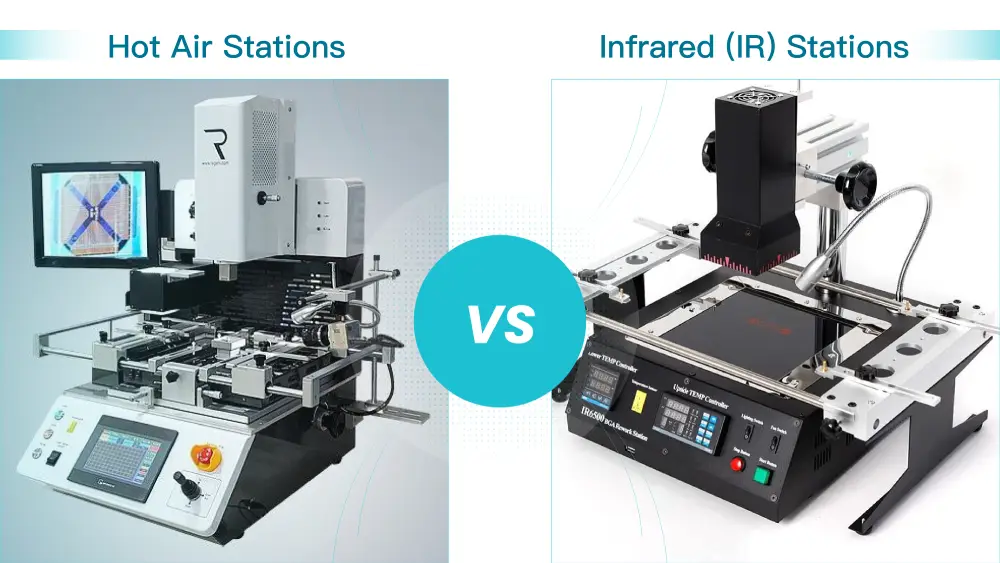
How to Choose the Right BGA Rework Station?
To decide whether to go with hot air or IR for your company, you must consider both their features and take into account how they will perform in your work environment. You need to factor in the following parameters when deciding on your BGA rework stations:
- Temperature Control
Hot-air rework stations usually focus heated air on the top and use an unfocused board heater for the lower portion. The airflow will heat over the BGA and under it, as well.
The IR rework stations don’t include a bottom-side focus for heated air. IR rework stations typically use a heat light equipped with a black diffuser that makes it easier to heat the BGA evenly.
- Efficiency
The hot air rework stations have nozzles that allow for focusing of airflow on different areas of BGA. It allows operators to complete the task quickly, because the hot air workstations make it easier to isolate the delicate details which are hard to heat.
IR workstations don’t need nozzles as each beam can refocus as per the operator’s command. But it may take longer to bring more delicate details to the required temperature. As IR workstations are very sophisticated; therefore, employees will need more time to develop the required skills.
- PCB Specs
Choose a station based on the size and sensitivity of BGAs. Make sure the heater area can accommodates BGA dimensions up to 36 inches and can reach 150 degrees to avoid warping. We must take the BGA age into account as well. At present, a majority of BGAs are lead-free which necessitates higher temperatures for reworking than did previous tin-lead solder solutions.
Further reading: Lead Solder vs. Lead-Free Solder: Which One Should You Choose
Top BGA Rework Challenges and How to Overcome Them
- Proper alignment of the BGA component
A major challenge we may encounter during ball grid array rework is properly aligning the BGA component, since the tiny solder balls are located underneath. Adopting new positioning solutions equipped with optical measuring functions can solve this problem more effectively.
- Achieving uniform heating during the reflow process
Uneven thermal supply might result in faulty solder points or harm electronic devices. Leveraging excellent BGA rework stations equipped with custom nozzles to guarantee even heat distribution can overcome this difficulty.
- Avoiding damage to surrounding components
For BGA reworking, we should consider increased heat which could endanger adjacent parts. To minimize risks to surrounding components, we must utilize effective PCB heating strategies and targeted hot air solutions.
- Inspecting hidden solder joints after rework
Identifying solder joints presents a difficulty since BGA connections are hidden. Solder joint quality relies on conducting X-ray inspection during BGA rework. It is crucial.
Conclusion
Effective BGA rework requires a high-end setup, a sophisticated work environment, and a well-trained operating staff. Many manufacturing companies don’t have the capital or resources for arranging these and end up producing poor quality BGAs. The smart way to address this is to reach out to a company like MOKO Technology, which not only manufactures PCBs and PCBAs but also specializes in BGA assembly and BGA rework. Feel free to contact us if you have any further queries or if you would like to ask for a potential quote.
